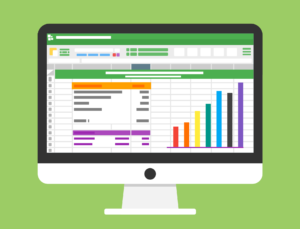 Digital Analytics (aka web analytics) is the companion to digital marketing. The two go hand in hand.
Digital Analytics (aka web analytics) is the companion to digital marketing. The two go hand in hand.
As with regular marketing, sales, or other business processes, understanding what works and what doesn’t is important alongside the execution of your process. And that’s where digital analytics comes in.
What is Digital Analytics?
For me, these new terms is really just a take on the traditional term, analytics. It’s just that you’re analyzing your digital processes and assets such website traffic, website conversions, social media traffic, and so on, with the intent to understand your visitor profile and then convert them either into customers or followers of yours.
If you are executing a campaign that is getting you lots of visitors and business, digital analytics doesn’t seem that important, until you start losing them.
So, while you’re serving your customers and trying to fulfill their needs with your product or service, understanding how you got them may not seem that important at the moment.
But, if you can, it’s good to try and track how and why you got them.
In one case, I thought one of my link building efforts was getting a client some really good traction. Instead, it was confounded with another issue where a website shut down it’s service and people were just looking for an alternative. Was it my link building or was it the fact that this competitor shut down?
Some web analytics and / or a short survey or questions during sign up could help solve that issue.
Sometimes to properly do web analytics, you may need to ask a few questions to confirm your hypothesis or observations. This could be done through email or during the sign-up process.
One of the easiest ways to carry out web analytics is to use Google analytics. Google analytics is free and powerful. Google has a suite of tools to help you understand your website and visitors and Google analytics is one of the most popular of it’s tools.
With good analytics, you can find out what kind of browsers people are using, what country they are coming from, the language they speak, gender, time of visiting, what pages they are visiting, and a whole lot more. The information can greatly help your business grow and target your audience.
If you want help with your analytics, contact me and we can discuss how I can help you understand your customers.


 Keyword research is arguably the most important task to do for your website with regards to search engine optimization or search marketing. Why? Because you might create a great website but discover that no one finds it on the internet. The internet is like a telephone book with name and contact information. But, how do you get someone to find your name unless someone already knows it?
Keyword research is arguably the most important task to do for your website with regards to search engine optimization or search marketing. Why? Because you might create a great website but discover that no one finds it on the internet. The internet is like a telephone book with name and contact information. But, how do you get someone to find your name unless someone already knows it? The SEO audit is for the most part the on-site factors of your website SEO. By having an audit and addressing any issues, it helps the search engine read and interpret your content correctly. Having the search engine correctly understand what you are trying to convey to people helps you get read by your target audience.
The SEO audit is for the most part the on-site factors of your website SEO. By having an audit and addressing any issues, it helps the search engine read and interpret your content correctly. Having the search engine correctly understand what you are trying to convey to people helps you get read by your target audience.